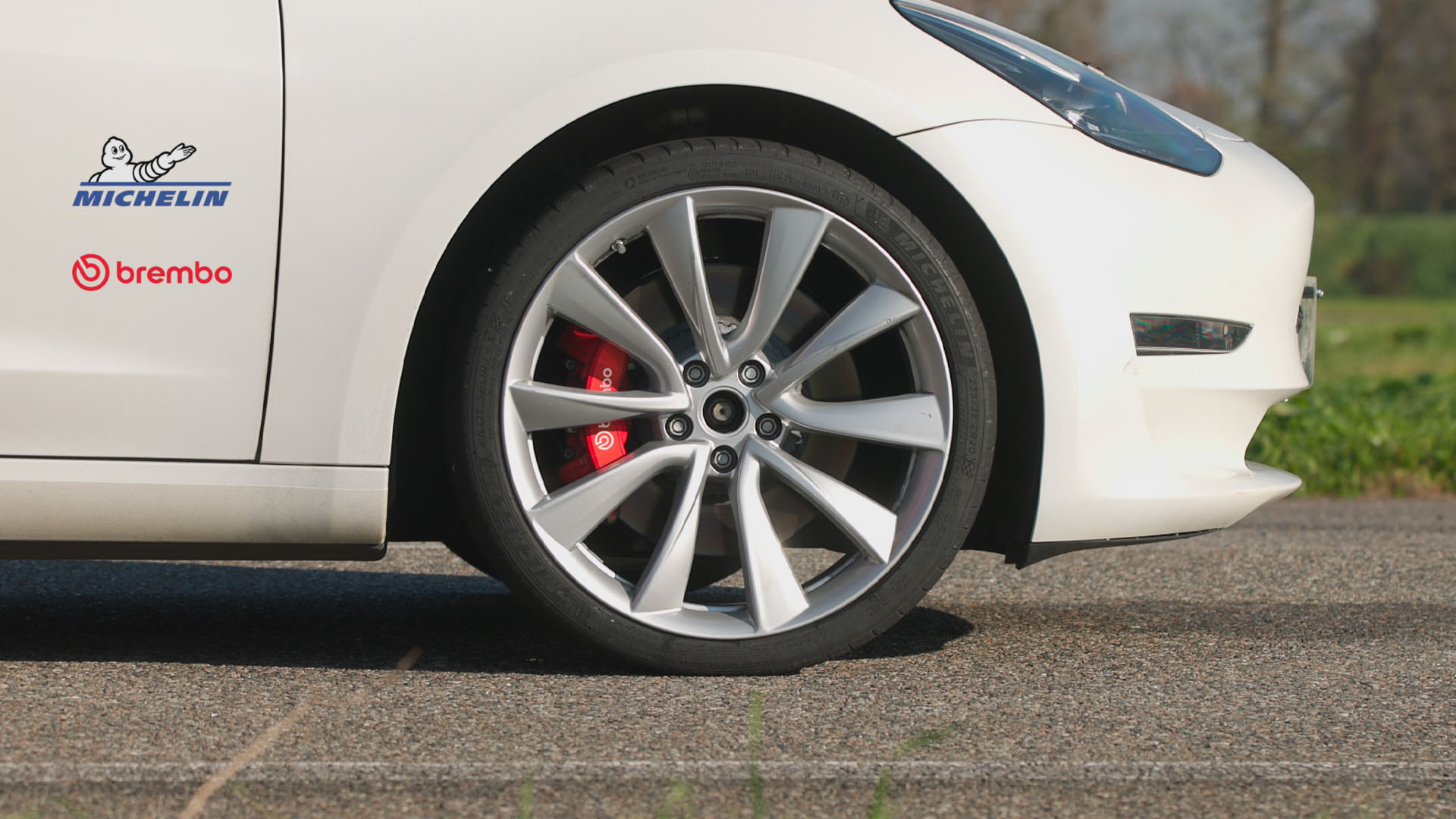

French tire company Michelin and Italian brake manufacturer Brembo are officially collaborating on an interesting vehicle control concept. Using a combination of sensors and computer processing, the idea is to make brakes and tires communicate with each other and the car they’re attached to. With more situational context, theoretically, stopping power could be improved.
Braking systems have been computerized, to a degree, for a very long time. ABS as we know it goes back to about the ’80s and earlier, and nowadays braking systems can be tied in with traction control and drive modes to optimize braking behavior situationally.
Brembo’s new Sensify system expands on that, leveraging AI and predictive algorithms to expand on real-time vehicle data and apply it to brake control. For example, instead of reacting to resistance and motion and engaging ABS or not, your car could theoretically consider all kinds of conditions in choosing how much brake force to apply, and to which wheel, when you hit the wide pedal.
Modern cars are so wired up that they know more about their speed, position, and situation than ever before. Sensify, as Brembo’s pitching it, takes that data a step further to not only react to what’s happening to the car instantaneously but also predict what’s happening to it in the immediate future.

I asked Brembo’s people for some follow-ups and got this detail:
“Artificial Intelligence is integrated throughout every phase of Sensify’s development process. This continuous application of AI is crucial for optimizing and fine-tuning the algorithms that govern Sensify’s behavior. By leveraging AI at each stage, from initial design to final deployment, we ensure that the algorithms are not only efficient but also adaptive to various scenarios, ultimately enhancing the overall performance and reliability of Sensify.”
The new development with Michelin is about bringing tires into the equation. The tire company is working on its software to help a car understand the wear condition, load, and grip of its tires, then feed that back to the car’s brain and brakes to optimize traction. You’re probably going to see Michelin SmartWear, Michelin SmartLoad, and Michelin SmartGrip in advertising soon—those are the names given to the products of this project.
Since tires are the single most critical component of any rolling vehicle (my opinion, but, it’s true) having this deployed correctly could be huge for vehicle safety and performance.
The fact that we’re talking about ECU software, rather than some kind of proprietary sensor that would only work with Michelin tires, is what makes these ideas particularly interesting to me.
Instead of scanning the tires directly, it sounds like the idea is to extrapolate tire condition information based on the myriad of info a car’s brain has at any given time. A couple of years ago I would have been extremely skeptical that such a thing could even be possible. But after seeing what AI can do with text, images, and indeed, driving (I can’t believe how many Waymo cars are buzzing around west Los Angeles right now!) I think these companies might be on to something.
Michelin and Brembo clarified that this is still in the development phase and wouldn’t discuss any potential deals with OEMs to implement this, but did confirm “the technology has the potential to be equipped to any modern vehicle.” However, it sounds like early successes in testing include brake-distance reduction, improved lateral stability and traction management, and elimination of wheel locking.
Heard about any other interesting AI-powered car performance concepts? Drop the author a line at andrew.collins@thedrive.com